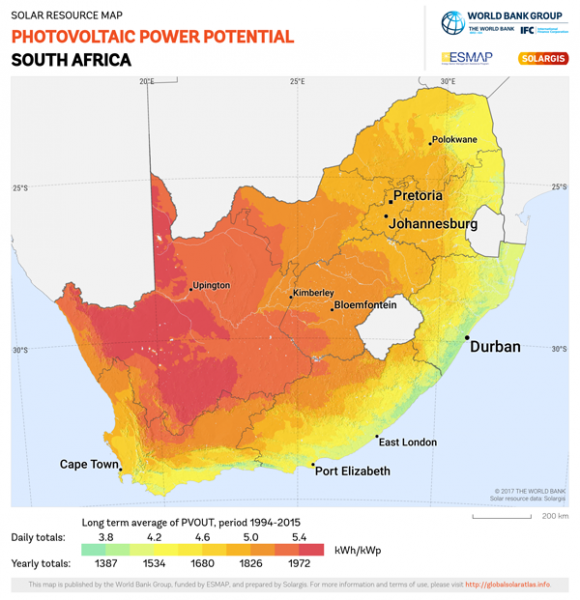How to determine the solar system size needed for a commercial building.
Are you looking to install solar power on your commercial building, but have no idea what would be the correct type or size of solar system to install? Then this guide might be helpful.
What System Type.
The only financially viable system type for commercial buildings at this stage is a grid-tied solar system with no energy storage. It is assumed you are familiar with this type of system and how it operates. If not then this article might be useful.
Generate for self-consumption.
Most municipalities in South Africa currently allow one to install and connect a solar system to their grid. However, they have very low or no tariffs for any energy exported to their grid.
Therefore it makes more sense to only generate enough solar electricity for your own needs, thus using as much of the generated solar energy yourself, and minimising any energy exported to the grid.
Each kilo Watt hour generated and supplied by the solar system is one kilo-Watt-hour of electricity less that needs to be purchased from Eskom / the municipality. This means that each kilo-Watt-hour of electricity generated by the solar system has the same value as what Eskom / the municipality charge per kilowatt-hour.
A solar system size that will generate the most energy to cover your own energy needs, with minimal exported energy, is the most economically viable system.
Solar generation profile
All solar power systems have a specific solar generation profile. As the sun rises in the morning it starts to produce energy, but very minimal. Over the course of the day the sunlight intensity increases producing more and more energy. Then as the sun begins to set, less and less energy is produced. This is an example of a typical solar generation profile.

Know how much energy you are using?
The first step is to determine how much energy you use each month. The best way to do this is to get the last 12 months' of electricity bills. Then enter all the bills in a spreadsheet and get an average monthly consumption figure.
Energy usage and load profile.
As we want to size the solar system to generate the most energy to cover your own energy needs, with minimal exported energy, it is necessary to know how the building uses energy. This is also called an energy usage load profile. But in absence of this data, we can assume a flat load profile. If a building has a flat load profile, then solar can only cover 30% of a building's usage.
For example, if a building has a flat consumption of 20 kW and one installs a 24 kW solar system. Assume the system generates at 80% of its rated power due to losses and less than optimal solar radiation. Then the following load and generation profile will be created.

This will give the following total figures per day.
| Total energy used per day | 480 kWh |
| Total energy generated per day by solar | 143 kWh |
| Total energy imported | 337 kWh |
| Total energy exported | 0 kWh |
| Self consumption | 143 kWh |
| Percentage supplied by solar | 30% |
Full sun hour factor
This is a factor that one can use to determine how much energy on average one kilo-Watt of installed solar panels will generate per day. This map below shows the daily totals for solar production in various regions in South Africa. That is the daily total kWh (kilo Watt hours) produced for each kWp (kilo Watt peak) of installed solar power. For example, in Johannesburg, the full sun hour factor is about 4.7.

Calculating your system size
Knowing your average consumption and the full sun hours factor in your area, we can calculate the right system size for you to maximise self-consumption.
Take your average monthly consumption and divide it by the average number of days per month (30). This will give you your daily energy consumption.
Now multipy the average daily consumption figure by 30%. The result is the amount of energy that can be supplied for self-consumption by a solar system.
Now take this figure and divide it by the full sun hour factor in your area.
For example
Say a building is using 4000 kWh per month on average.
- 4000 kWh / 30 days = 133.3 kWh per day
- 133.3 kWh * 0.3 = 40 kWh per day
- 40 kWh / 4.7 = 8.5 kWp
Thus the most economically viable size will be a 8.5 kiloWatt peak, grid-tied solar system.
Need some help in sizing your solar system?
We have a database of competent installers and solar consulting companies in Southern Africa. A good installer/consultant will be able to help you determine your energy requirements.
Simply fill on the following page to request a consultation/quote from competent, pre-approved companies in your area.
14.11.2019 /

